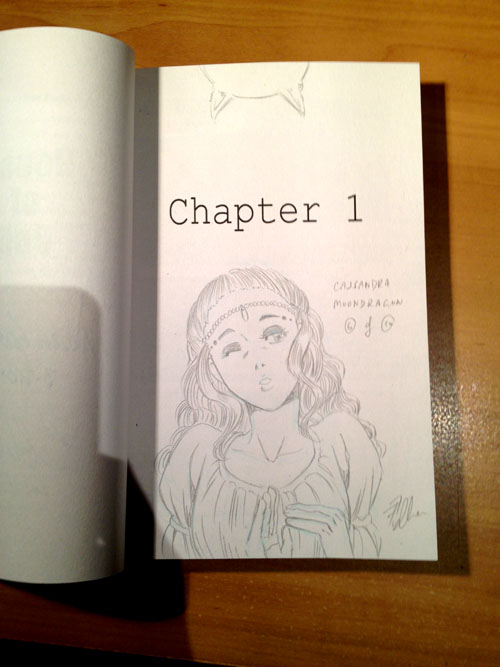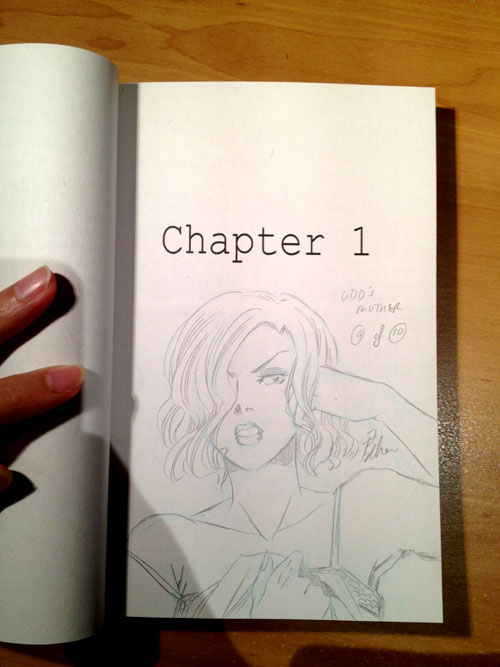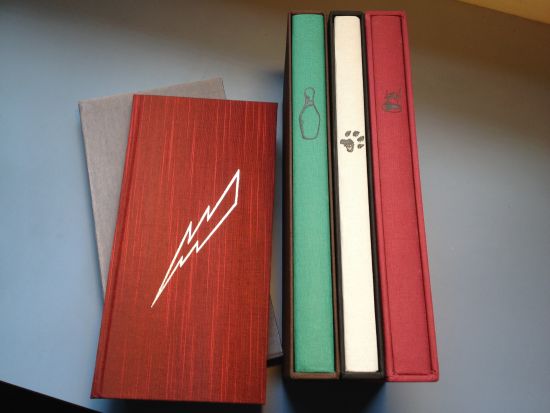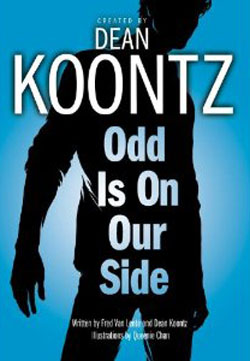The last part of Odd Thomas 3 has finally been approved, and I can now work towards finishing the book! 40 pages left to ink before the end!
I realise I haven’t posted some art up for a while, so this week I’m posting up page 24 of “House of Odd”, the third Odd Thomas book. To give people an idea of how the art is adapted from the script, and the progression of the art from pencils to the final pages, I’ve put it here in stages.
The first stage is ofcourse the script, which in this case is written by someone else (with me acting as the illustrator only). This may be a good example of how to write a script.
PAGE 24
PANEL 1: Having turned away, Nedra walks into the house. Odd and Stormy follow behind her
STORMY: So, Ms. Nolan . . . Ozzie said you think this house is haunted?
NEDRA: These spirits are as spoiled rotten as any movie star.
PANEL 2: Reverse angle from the last panel, so we can see the characters walking towards the camera. In the background, behind them, the front door is now shut.
NEDRA: They think it’s all about them, them, them.
PANEL 3: Odd cocks his head to one side, eyes rolling a bit in frustration and bemusement. Nedra is blissfully unaware of this as she continues to lead them deeper into the mansion.
NEDRA: But it’s really my production.
NEDRA: I told Ozzie that I had no need for amateur ghostbusters like you.
PANEL 4: Stormy’s gaze narrows.
STORMY: Amateurs?
NEDRA: No offense. I’ve called in the professionals!
Next up, are the pencils. You may have noticed that I didn’t follow what was laid out in the panels in the script. This is because I feel that an illustrator’s job in comics is to tell the story as best as it can be told, and if that means not following the script, then so be it.
This isn’t uncommon in comics, since a fair number of artists will have been in situations when they can’t follow a script – mostly because what is described in the panels can’t be depicted in pictorial form. If it happens, it’s not because writers aren’t respected, but because writers aren’t always visual people, and don’t always know if what they’re describing in a panel can actually be drawn.

The inks are next. This part is straight-forward. I use a combination of dip pens (The Zebra G-pen and nikko pen) and Sakura microns to do my inking, and it’s worked for me fine. I find that the look of the art changes depending on the tools you use, but for Odd Thomas, I’ve always stuck with this style of art. Different kinds of stories call for different kinds of art, and Odd Thomas requires art that isn’t stylised or takes artistic lliberties. It’s not that kind of story.

Finally, the tones and dialogue. The tones are done by the wonderful Dee DuPuy, and she uses a program called Deleter ComicWorks, which I then later open up in Photoshop to add the words. And thus, the page is finished and ready for print.


























